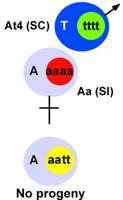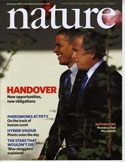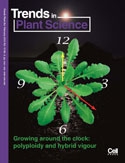
Although heterosis is common in hybrids and allopolyploids that overcome postzygotic barriers, some hybrids and allopolyploids are sterile and cannot produce offspring, a phenomenon known as hybrid incompatibility. Dobzhansky (1936), Muller (1942), and Bateson (1909) proposed a model to explain the phenomenon. The modern iteration of their model is that hybrid incompatibilities are caused by interactions between genes and small RNAs that have functionally diverged in the respective hybridizing species. In Drosophila, piRNAs are associated with the Argonaute proteins Piwi and MiWi2, and loss of protein function and/or maternal transmission of siRNA in the repression of transposition cause sterility or hybrid dysgenesis. In Arabidopsis, genome-wide demethylation and maternal transmission of siRNAs were observed in endosperm. In allotetraploids we found accumulation of Arabidopsis thaliana (maternal) centromeric siRNAs associated with DNA methylation. Moreover, many siRNAs are absent in F1 but are restored in later generations, suggesting that these siRNAs affect genome stability through interactions between siRNAs and centromeric proteins. One possibility is that siRNAs produced in one species cannot be recognized by proteins, including histone variants, centromeric and/or siRNA biogenesis proteins, in another species, failing to silence heterochromatin and transposons, leading to “genome shock” as predicted by Barbara McClintock (1984) and seed lethality. Using Arabidopsis interspecific hybrids and genetically tractable allopolyploids, we will test how hybrid lethality occurs during interspecific hybridization and how they are overcome during self-pollination to produce fertile and stable allopolyploids.
Related web information about hybrid incompatibility
Reproductive Isolation Wikipedia
Ten selected papers about hybrid incompatibility
- Aravin AA, Hannon GJ, Brennecke J: The Piwi-piRNA pathway provides an adaptive defense in the transposon arms race. Science 318: 761-4 (2007).
- Bateson W: Heredity and variation in modern lights. In: Seward AC (ed) Darwin and Modern Science, pp. 85-101. Cambridge University Press, Cambridge (1909).
- Bomblies K, Lempe J, Epple P, Warthmann N, Lanz C, Dangl JL, Weigel D: Autoimmune Response as a Mechanism for a Dobzhansky-Muller-Type Incompatibility Syndrome in Plants. PLoS Biol 5: e236 (2007).
- Bourc'his D, Voinnet O: A small-RNA perspective on gametogenesis, fertilization, and early zygotic development. Science 330: 617-22 (2010).
- Dobzhansky T: Studies on Hybrid Sterility. II. Localization of Sterility Factors in Drosophila Pseudoobscura Hybrids. Genetics 21: 113-35 (1936).
- Gehring M, Bubb KL, Henikoff S: Extensive demethylation of repetitive elements during seed development underlies gene imprinting. Science 324: 1447-51 (2009).
- Ha M, Lu J, Tian L, Ramachandran V, Kasschau KD, Chapman EJ, Carrington JC, Chen X, Wang XJ, Chen ZJ: Small RNAs serve as a genetic buffer against genomic shock in Arabidopsis interspecific hybrids and allopolyploids. Proc Natl Acad Sci U S A 106: 17835-40 (2009).
- McClintock B: The significance of responses of the genome to challenge. Science 226: 792-801 (1984).
- Mosher RA, Melnyk CW, Kelly KA, Dunn RM, Studholme DJ, Baulcombe DC: Uniparental expression of PolIV-dependent siRNAs in developing endosperm of Arabidopsis. Nature 460: 283-6 (2009).
- Muller HJ: Isolating mechanisms, evolution and temperature. Biol. Symp. 6: 71-125 (1942).



